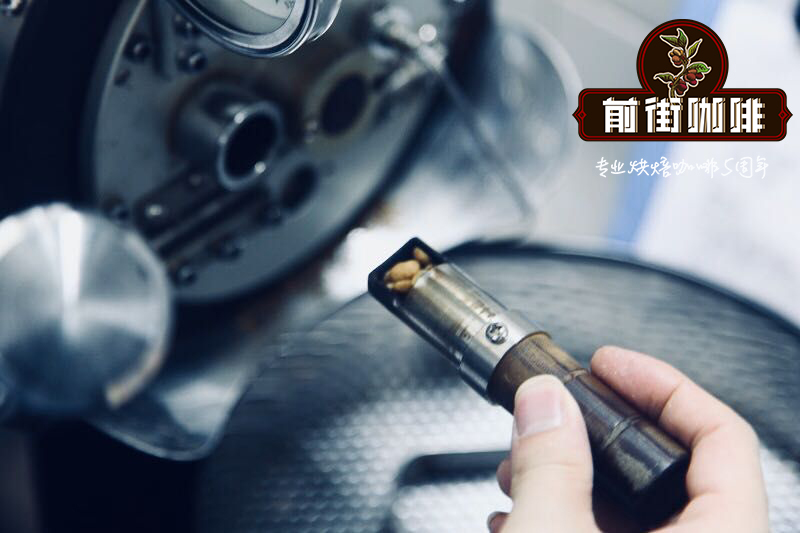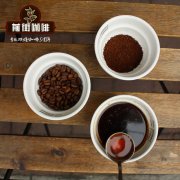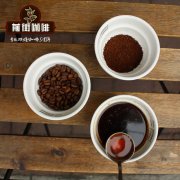What kind of coffee beans are Indian-style Malaba coffee (monsoon coffee)? What kind of flavor?
What kind of coffee beans are Indian-style Malaba coffee (monsoon coffee)? What kind of flavor?

Producing area: South India-Karnataka West Gaozhi Mountains
Manor: Bella Camona Manor
Variety: Katim, Kent, S795
Grade: AA
Altitude: 1100-1200m
Treatment method: wind stain treatment method
India's wind-stained Malaba is a very famous boutique bean. The processing process requires artificial hard selection of ripe coffee fruit. Through natural ripening, monsoon will occur in southwestern India in May and June every year. The raw coffee beans will be exposed to the Indian Ocean seasonal sea breeze, and the coffee beans will expand. The appearance of the coffee beans is wheat yellow, almost adult beans taste, low acidity and high consistency, with a hint of wheat stalk aroma. Can be said to be "coffee Pu'er tea", the taste is very unique to produce an amazing taste.
Wind-soaked beans are produced by the cooperation of the earth and the sea breeze to produce a complex and unique flavor. Wind-stained Malaba is a unique coffee product on the west coast of Malaba. Coffee is processed here and shipped to all parts of the world. Early beans from the coast of Malaba to Europe took six months. Under the influence of the sea breeze, these beans have undergone significant changes in flavor characteristics and color. These changes led to the birth of wind-stained Malaba boutique beans. And it enjoys a high reputation in the Nordic countries. .
Today, Monsooned Malabar AA is famous in the world of boutique coffee, using selected A-grade raw beans to be transported to Mangalore's wind-soaked field, where they are graded and picked out, and then the sun-dried raw coffee beans are exposed to the moist sea breeze for the process of wind staining. the coffee beans will be evenly spread on the floor and flipped by rich veterans. Let these beans fully soak in the moisture of the sea breeze. The process of wind stain takes about 12 to 16 months, and finally the bean body will be about twice the original size, and at the same time the bean color will turn to wheat yellow. Finally, the unwind-stained beans or other sundries and defective beans will be screened again, and then the post-production actions such as cup and grading will be carried out.
Important Notice :
前街咖啡 FrontStreet Coffee has moved to new addredd:
FrontStreet Coffee Address: 315,Donghua East Road,GuangZhou
Tel:020 38364473
- Prev

What is the planting environment of Mantenin G1 in Sumatra, Indonesia? What are the characteristics of Manning coffee?
What is the planting environment of Mantenin G1 in Sumatra, Indonesia? What are the characteristics of coffee? Country: Indonesia production area: Lindong Sumatra Grade: G1 three times hand-selected altitude: 900-1600m treatment: traditional stripping method varieties: Typica iron card Mantenin refers to north-central Sumatra around Lake Toba, southwest coast elevation 9-1200 meters above sea level, Lindong Mountain area (Lintong
- Next

What is the flavor of Sumatra's aged Mantenin? How do you store raw beans?
What is the flavor of Sumatra's aged Mantenin? How to brew manning? How do you store it? Aged beans are an unexpected result of coffee history. During the Dutch colonial period, Sumatra was one of the main coffee producing areas in the world. The coffee produced had to supply the huge demand of European consumer countries. In order to ensure a safe supply, the coffee bean merchants kept part of the harvest for storage and storage.
Related
- Detailed explanation of Jadeite planting Land in Panamanian Jadeite Manor introduction to the grading system of Jadeite competitive bidding, Red bid, Green bid and Rose Summer
- Story of Coffee planting in Brenka region of Costa Rica Stonehenge Manor anaerobic heavy honey treatment of flavor mouth
- What's on the barrel of Blue Mountain Coffee beans?
- Can American coffee also pull flowers? How to use hot American style to pull out a good-looking pattern?
- Can you make a cold extract with coffee beans? What is the right proportion for cold-extracted coffee formula?
- Indonesian PWN Gold Mandrine Coffee Origin Features Flavor How to Chong? Mandolin coffee is American.
- A brief introduction to the flavor characteristics of Brazilian yellow bourbon coffee beans
- What is the effect of different water quality on the flavor of cold-extracted coffee? What kind of water is best for brewing coffee?
- Why do you think of Rose Summer whenever you mention Panamanian coffee?
- Introduction to the characteristics of authentic blue mountain coffee bean producing areas? What is the CIB Coffee Authority in Jamaica?

